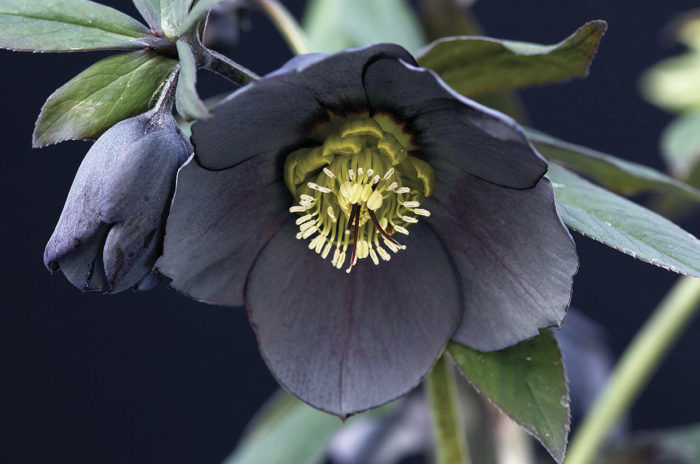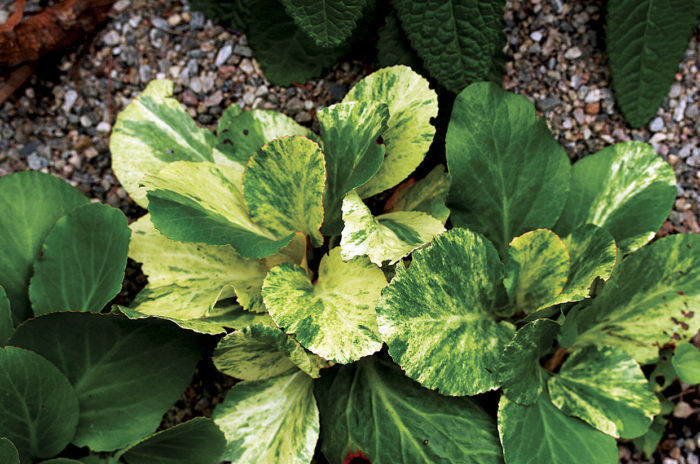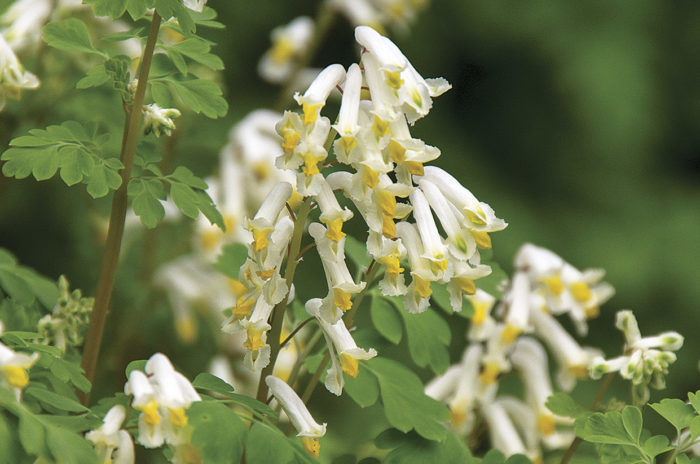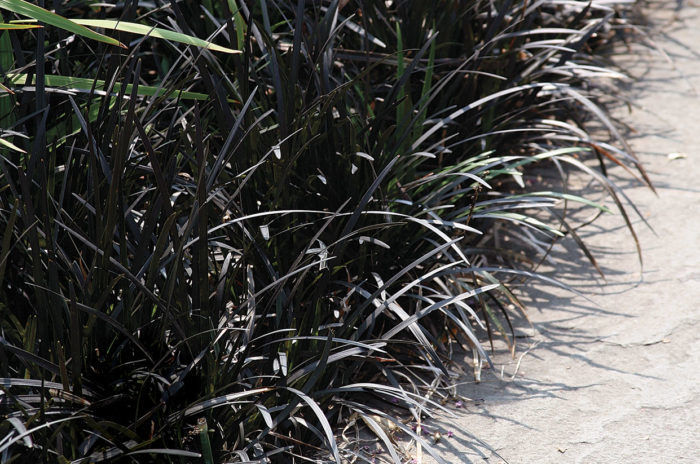
1. ‘Blue Diamond’ hellebore
Name: Helleborus ‘Blue Diamond’ 

USDA Hardiness Zones: 4 to 9
Size: 1 to 2 feet tall and wide
Conditions: Partial shade; rich, moist soil
It’s amazing to walk outside on a blustery early-spring day and see the hellebores waving. ‘Blue Diamond’ hellebore has a particularly lovely bloom in a dark, slate blue hue. The petals are truly luminous in bright sunlight. ‘Blue Diamond’ is a new color breakthrough from Northwest Garden Nursery in Eugene, Oregon. Hellebore blossoms generally face downward, requiring you to place the plant on a slope so that you can see its flowers at full advantage. But you won’t need to worry about that siting restriction with the outward-facing ‘Blue Diamond’. The foliage remains evergreen, although, to freshen it up, some selective spring trimming is a good idea.
2. ‘Tubby Andrews’ bergenia 

Name: Bergenia cordifolia ‘Tubby Andrews’
Zones: 3 to 8
Size: 6 to 12 inches tall and wide
Conditions: Full sun to partial shade; moist soil
A wonderfully unique bergenia with irregularly splashed variegation, ‘Tubby Andrews’ features bright magenta flowers, which appear in spring and return reliably again in autumn. This perennial keeps its variegated evergreen foliage throughout the year. Some leaves are entirely pale gold, while others are a mix of gold, pale green, and green. Winter brings a blush of red to all the leaves. The interesting texture and bright color of the foliage act as a nice contrast to any surrounding stars.
3. White corydalis 

Name: Corydalis ochroleuca
Zones: 6 to 8
Size: 6 to 12 inches tall and wide
Conditions: Partial shade; rich, moist soil
I often see delicate white corydalis in mature gardens, where it happily self-sows among other shady plants—proving that sometimes the best plant combinations are accidental. Its creamy white flowers with a yellow tongue stand out against the glaucous foliage below. Corydalis flowers tend to be bright blue and purple, with new cultivars showing up all the time; although the blooms are striking, the foliage never goes the distance. White corydalis, however, will last far into the season, when other corydalis have gone dormant.
4. Black mondo grass 

Name: Ophiopogon planiscapus ‘Nigrescens’
Zones: 5 to 10
Size: 6 to 12 inches tall and wide
Conditions: Full sun to partial shade; moist soil
The popularity of this small grasslike plant is showing no signs of waning—and for good reason. Although black mondo grass is a stunner all season long, spring is a great time to catch some of its best features. Its evergreen (or, really, black) blades contrast with almost any plant you pair it with, including the fine, bluish green foliage of white corydalis and the bolder variegated foliage of ‘Tubby Andrews’ bergenia. Black mondo grass produces blue-black berries, which often hold on from fall into spring. As it emerges from the ground, the new growth is an amazingly vibrant deep green before it turns totally black. Over time, this stunner will create a mass that can be divided and moved to enhance other plant combinations.
Susan Calhoun is the principal designer and owner of Plantswoman Design, a landscape firm in Bainbridge, Washington.



















Comments
Log in or create an account to post a comment.
Sign up Log in